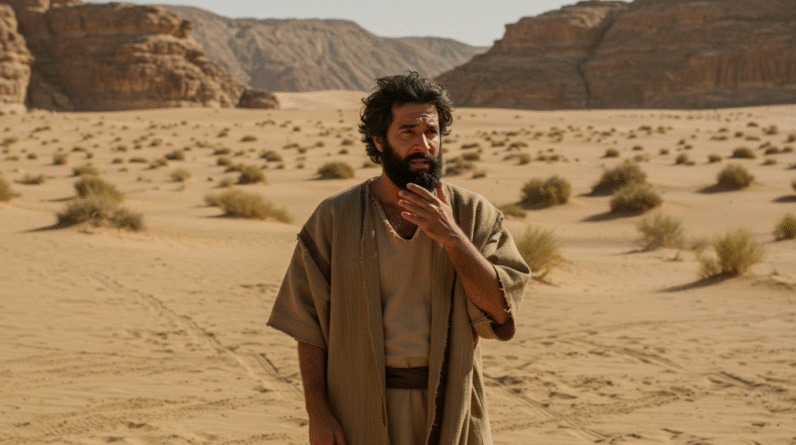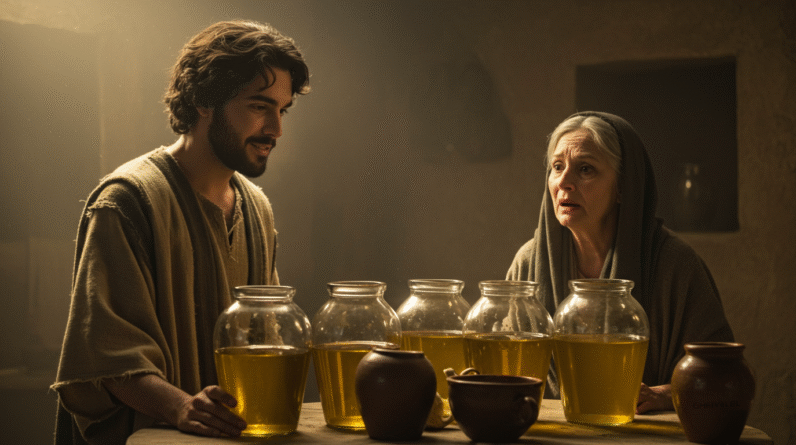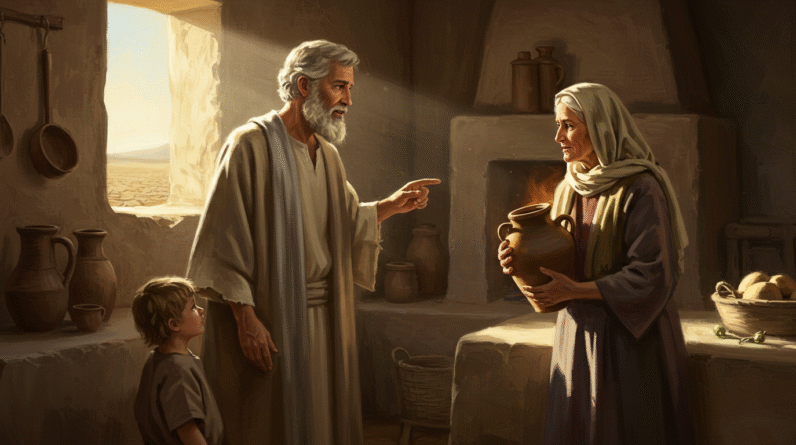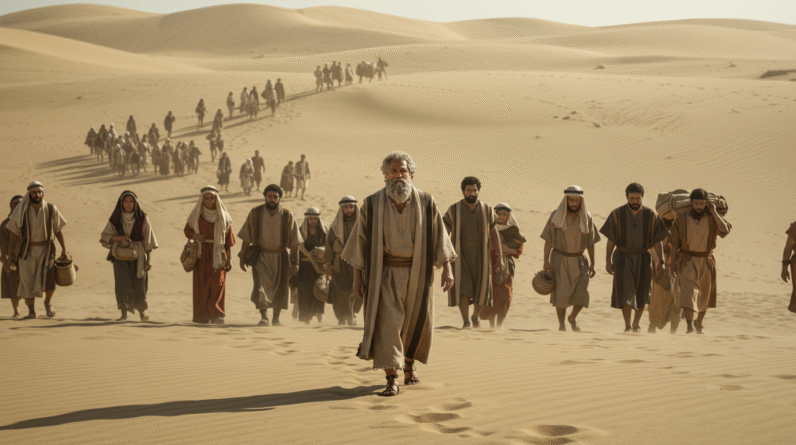The Healing of Naaman: Elisha’s Role in a Leper’s Restoration
You’re about to dive into one of the most fascinating stories in the Bible, a tale of humility, faith, and God’s unexpected ways. Welcome to the story of Naaman, a leper whose healing is documented in 2 Kings 5. This is not just a story of physical healing but a narrative rich with lessons about spiritual insight and transformation.
The Many Layers of Naaman’s Condition
Before jumping into the miraculous healing event, you need to understand who Naaman was. He wasn’t just anybody; Naaman was a man of significance and stature. As the commander of the army of the King of Aram, Naaman was a mighty warrior. However, he had a significant problem: he suffered from leprosy. 2 Kings 5:1 describes him as “a great man in the sight of his master and highly regarded,” yet afflicted with this debilitating disease.
Naaman’s social standing, wealth, and accolades couldn’t offer him what he desperately needed: healing. Despite his impressive résumé and military acumen, his condition made him vulnerable, adding a layer of emotional and spiritual complexity to his story.
The Young Maid’s Suggestion
What’s compelling here is that Naaman’s path to healing began with someone who, by societal standards, was insignificant—a young Israelite girl. Captured in a raid and now serving Naaman’s wife, she held within her a seed of hope. With courage and faith, she suggested that Naaman visit the prophet in Samaria for healing 2 Kings 5:3. Her simple, selfless act set into motion a transformative journey for Naaman, a testament to how God often uses the least likely individuals to accomplish His purposes.
The Role of Kings: A Diplomatic Approach
Once Naaman decided to seek help, the process became diplomatic. A leper seeking healing had become an affair of state. Naaman, with the king’s blessing, journeyed to Israel carrying a letter to the King of Israel, along with gifts of silver, gold, and garments—indicative of both Naaman’s wealth and the seriousness of his quest 2 Kings 5:5-6.
The King of Israel was understandably flustered. Receiving a letter requesting healing—almost like being asked to perform a miracle—left him in turmoil. “Am I God?” he exclaimed, recognizing the task’s impossibility in human terms 2 Kings 5:7. This moment serves as a reminder of human limitations, regardless of earthly power or title.
Elisha: A Prophet’s Intervention
Enter Elisha, the prophet. Upon hearing of the king’s distress, Elisha stepped up, sending a message to welcome Naaman and demonstrate God’s power through him 2 Kings 5:8. Elisha’s invitation emphasized faith over pomp and circumstance, urging Naaman to shift his perspective from societal norms to divine possibilities.
When Naaman arrived at Elisha’s doorstep, the prophet didn’t even meet him in person. Instead, a messenger delivered Elisha’s directive: bathe seven times in the Jordan River 2 Kings 5:10. This was not what Naaman expected, and it sparked a dilemma—how could such a simple act possibly cure him of leprosy?
The Struggle with Pride and Expectation
You can imagine Naaman’s indignation. Here was a man accustomed to royal treatment, yet Elisha didn’t even see him face to face. Adding salt to the wound, the Jordan River wasn’t impressive by any means. He questioned why he couldn’t simply wash in the rivers of Damascus, which were far superior 2 Kings 5:11-12.
Naaman’s reaction showcases a critical moment: the conflict between human pride and divine instruction. He was on the brink of turning away in anger, his pride nearly losing him the chance for healing. It raises an essential question for you as well: how often do expectations hinder your ability to obey simple, divinely-inspired instructions?
The Humbling Path to Obedience
What changed Naaman’s mind was the gentle persuasion of his servants. They urged him to follow Elisha’s directive, reasoning that if the task had been difficult, he would have done it, so why not do something as straightforward as washing in the river? 2 Kings 5:13.
Here, humility enters as a key theme. It took a moment of vulnerability and a shift from self-reliance to obedience, precipitated by the wisdom of those beneath him, for Naaman to relent. This echoes throughout the Bible, where humility before God leads to blessing and restoration.

The Miracle of Healing
Naaman’s submission to Elisha’s seemingly mundane command resulted in a miracle. After immersing himself seven times in the Jordan River, his flesh was restored, becoming clean like a young boy’s 2 Kings 5:14. Naaman healed! The simple act of obedience, rather than grand gestures or expensive gifts, brought about his transformation—a testament to God’s power and grace.
This miracle was more than skin-deep. It signified not only physical healing but also an inner transformation. Naaman, a man of prominence, was renewed through an act of humility and faith. It’s a poignant reminder of how God’s methods can be unexpected yet supremely effective.
Gratitude and Recognition of God’s Sovereignty
Following his healing, Naaman returned to Elisha, expressing gratitude and offering gifts. However, Elisha refused the gifts, pointing to the work of God rather than himself 2 Kings 5:15-16. This refusal reiterates the theme that God’s miracles cannot be purchased. They are acts of divine grace freely given to those who obey.
Naaman’s declaration is profound: “Now I know that there is no God in all the world except in Israel,” he exclaimed, acknowledging the supremacy and exclusivity of the God of Israel 2 Kings 5:15. Through his healing, Naaman’s perspective shifted entirely, recognizing God’s sovereignty above all.
The Legacy of a Miraculous Transformation
The story of Naaman is not just a remarkable biblical narrative; it’s a profound lesson in faith, humility, and obedience. Naaman healed brings a message that your status or wealth is inconsequential in the spiritual realm. God’s works are beyond human comprehension, using simple acts and unexpected means to fulfill His purposes.
Elisha’s role is pivotal, but it was God who orchestrated each step of Naaman’s journey, from a young girl’s suggestion to the final act of obedience. This narrative leaves you reflecting on your own life. Perhaps you’re standing at your figurative Jordan River, faced with simple instructions that could lead to transformation, if only you would swallow your pride and take the plunge.
Explore More
For further reading and encouragement, check out these posts:
👉 7 Bible Verses About Faith in Hard Times
👉 Job’s Faith: What We Can Learn From His Trials
👉 How To Trust God When Everything Falls Apart
👉 Why God Allows Suffering – A Biblical Perspective
👉 Faith Over Fear: How To Stand Strong In Uncertain Seasons
👉 How To Encourage Someone Struggling With Their Faith
👉 5 Prayers for Strength When You’re Feeling Weak

📘 Jesus and the Woman Caught in Adultery – Grace and Mercy Over Judgement
A powerful retelling of John 8:1-11. This book brings to life the depth of forgiveness, mercy, and God’s unwavering love.
👉 Check it now on Amazon
As a ClickBank Affiliate, I earn from qualifying purchases.
Acknowledgment: All Bible verses referenced in this article were accessed via Bible Gateway (or Bible Hub).
“Want to explore more? Check out our latest post on Why Jesus? and discover the life-changing truth of the Gospel!”








